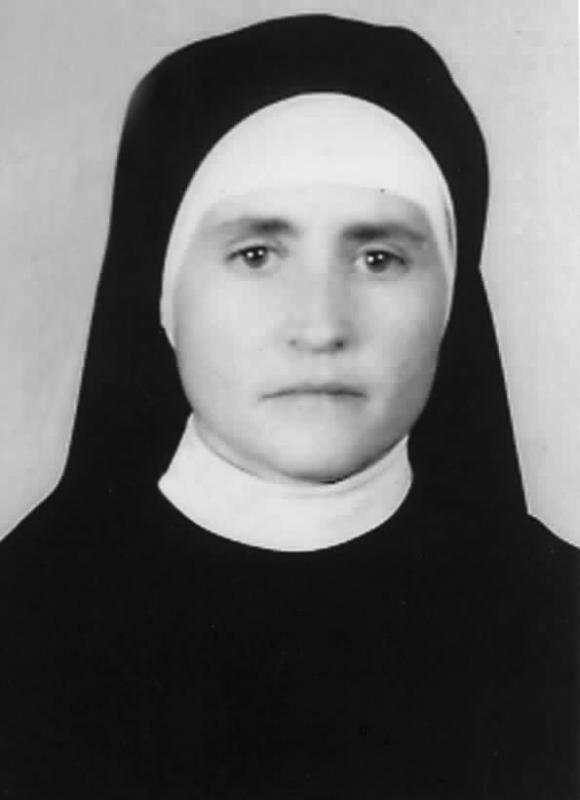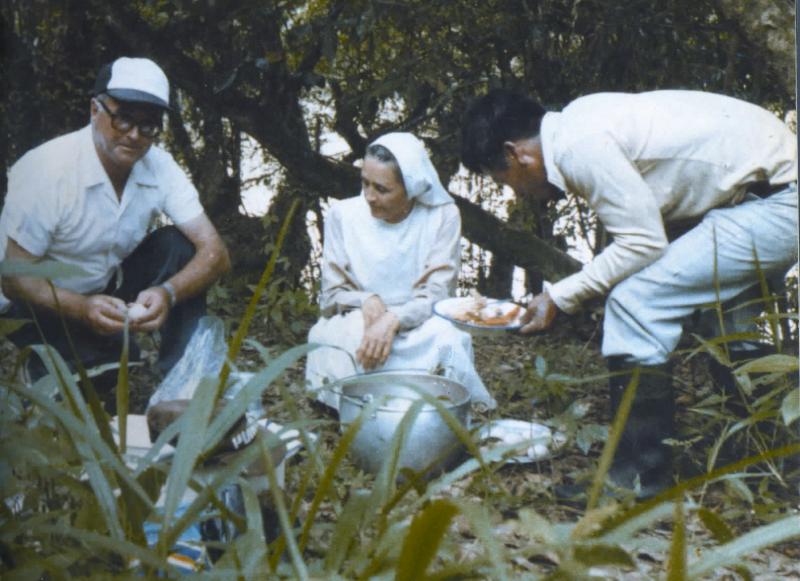Ines Arango Velasquez: Passion For The Mission

By Sister Adela Paternina TC
Sister Adela, from Colombia, came to the Philippines in March 1999. She celebrated her Golden Jubilee in Bacolod on 8 December 2003. She was a friend of Sister Ines.
Ines came into this world on 6 April 1937 in Medellín, Colombia, the eleventh of twelve children of Fabricano Arango and Magdalena Velasquez. She was baptized four days later, confirmed on 6 October 1940 and received her First Holy Communion in 1944. Like two of her sisters, Fabiola, the eldest, and Cecilia, she joined the Capuchin Tertiary Sisters. Another, Angela, left as a junior sister.
The three sisters were following relatives on both sides of their family. Their mother had two brothers who were Jesuits, one a missionary in China, another brother a Franciscan and a sister a Poor Clare. Their father had a sister in the Capuchin Tertiary Sisters and another a Conceptionist Franciscan Sister. The extended clan produced 90 religious and priests. Ines’ home was a model of Christian life, the family attending Mass in the early morning and praying the rosary in the evening.
WHAT WAS INES LIKE?
Ines’ character was like ‘fire,’ but she was innocent and pure. She loved her mother in a special way and was very obedient and serious. Yet she was very joyful and able to share this joy with others. She was simple and self-sacrificing, always ready to help others. She was very sincere but didn’t like being corrected, which is why she was considered a little stubborn.
After three years of high school Ines joined the Lauritas Missionary Sisters as an aspirant for two months. But God had other plans. On 17 October 1954, the centenary of the birth of Bishop Luis Amigó, founder of the Capuchin Tertiary Sisters, she felt in her heart, while attending the profession of her sister Cecilia, that Jesus wanted her to join that congregation. She immediately asked the superior of the San José province to be admitted. Her parents were present when she started her postulancy in Medellín at the age of 17.
Ines started her novitiate on 2 July 1955, changing her name to Sister Maria Nieves de Medellín. On 7 July 1956 she made her first Profession.
Though she looked fragile - Ines was 5-foot-2 and only 88 pounds - she was very healthy, full of energy and full of missionary ideals. She wanted to be a missionary from her adolescence but had to wait for 20 years before being sent to another country.
INES AS A TEACHER
After Ines’ profession the Provincial Superior assigned her to teach in the elementary school in Versalles in the departamento (province) of Valle de Cauca. She subsequently taught in several other places in Colombia. Her students loved Ines and considered her an excellent teacher. One of her students, now a Capuchin Tertiary Sister in Venezuela, called her ‘a giant soul in a small body.’Shealso considered that she learned more from the example of Sr Ines whose life was an ‘open book’ for her students.
INES A MISSIONARY
In January 1977 Ines was one of the founders when the San José Province of the Sisters in Colombia opened a missionary house in the Prefecture Apostolic of Aguarico in the Amazonas Jungle in Ecuador. When the new community later opened a hospital in Nuevo Rocafuerte, near the Peruvian border, Ines was made superior and here she was to spend nearly all of her time in Ecuador. This too was to be a time of great growth in her spiritual life, a time of greater intimacy in prayer, of greater sacrifice and of total generosity in serving the people.
MONSEÑOR ALEJANDRO
Bishop Alejandro Labaca Ugarte OFMCap, first bishop of Aguarico, did missionary work with a group of indigenous people called Huaorani or Aucas. He invited Sr Ines to join him in this work as he saw the presence of a woman as being very important. Ines started with the permission of her superiors in Medellín and spent several periods in the middle of the jungle, adjusting to the culture and food of the local people. She learned the language, one of the ways in which she showed her love for the people. She discovered that the Aucas, who don’t wear clothing, didn’t know how to use fire or how to travel by river. Little by little the people’s lot improved and their lives as citizens of Ecuador were transformed.
THE TAGAERI TRIBE
Monseñor Labaca also wanted to help the Tagaeri people, a branch of the Huaorani ethnic group, numbering less than a hundred. The Tagaeri have always refused to make contact with outsiders. Before his planned visit, the bishop had food, towels, knives and other utensils dropped by helicopter. When he thought that all was ready, he invited Sr Ines to go with him to visit the Tagaeris. The day before Sister Ines left, Sr Laura Fernandez asked her:
- Are you not afraid? What if they kill you?
- That’s not a problem. I’ll die happy.
- But Ines, is it true that you are not afraid?
- No, Laura, because if I die, I will die in the way and in the place that I begged from the Lord!
21 JULY 1987
Very early in the morning Bishop Alejandro and Sister Ines went to the place of the Tagaeri tribe. They descended from the helicopter by ‘crane.’ The aircraft then returned to base.
However, the Tagaeri didn’t accept the visitors, thinking they were a threat to their way of life. The Capuchins seemed to be aware of this possibility and the following day insisted that the helicopter go back again. The crew could see the bodies of the two missionaries but before retrieving them returned to base for some armed soldiers in case the Tagaeris would attack again. However, they had disappeared. The badly decomposed bodies showed that Monseñor Alejandro and Sister Ines had many wounds from spears about four meters long. The bodies were taken to Coca City and, after Mass and a procession, buried in the cathedral.
The Sisters found this message in the room of Ines:
In case of death:
If I die, I will die happy. I prefer no one will know anything about me, I don’t seek honor. God knows . . .
Always with all of you: INES.
The process for the beatification of Bishop Alejandro and Sister Ines as martyrs began two years ago.

